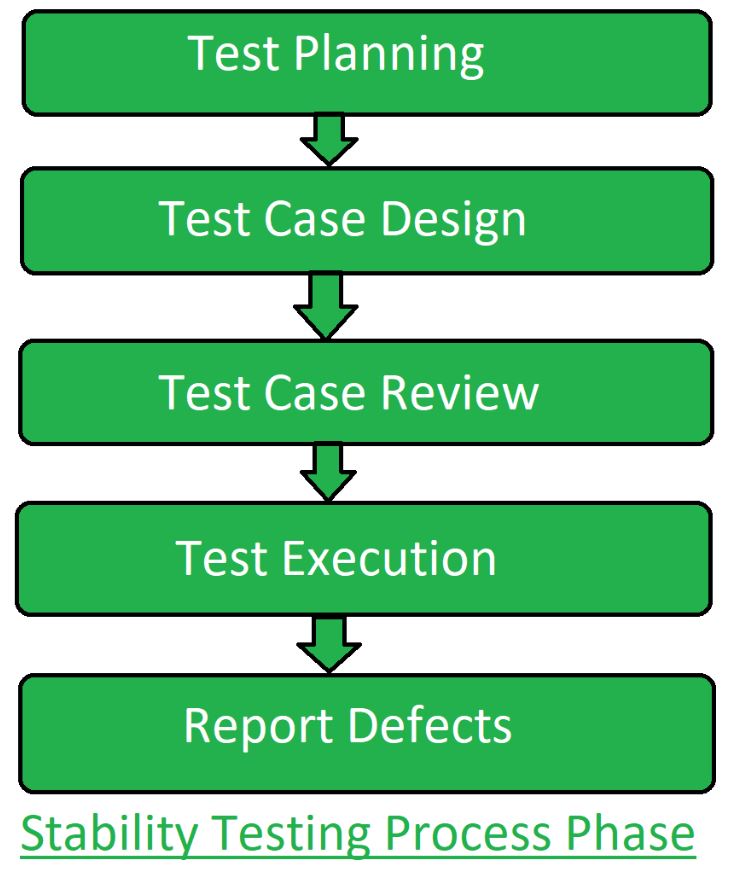Stability Testing – Software Testing
Last Updated :
11 Dec, 2023
Stability Testing is a type of Software Testing to check the quality and behavior of the software in different environmental parameters. It is defined as the ability of the product to continue to function over time without failure.
It is a Non-functional Testing technique that focuses to stress the software component to the maximum. Stability testing is done to check the efficiency of a developed product beyond normal operational capacity that is known as break point. It has higher significance in error handling, software reliability, robustness and scalability of a product under heavy load rather than checking the system behavior under normal circumstances.
Stability testing assesses stability problems. This testing is majorly intended to check whether the application will crash at any point in time or not.
Objective of the Stability Testing:
The objective of the stability testing is:
- To yield confidence in the stability of the system or software application under test.
- To ensure the system handling big programs.
- To operate the effectiveness of the system or software application.
- To check the stability of the system under stress.
Stability Testing Process:

Stability Testing Process
- Test Planning: Considering the expected usage patterns of the system and the need for constant performance over an extended period of time, define the general goals and aims of stability testing.
- Test Case Design: To evaluate the stability of the system, provide detailed test cases that match real-world usage patterns and circumstances.
- Test Case Review: Examine the test cases for accuracy and completeness to guarantee their effectiveness and quality.
- Test Execution: Conduct stability tests to evaluate the system’s capacity to sustain stable operation for a prolonged period of time and in a variety of circumstances.
- Report Defects: Determine and record any flaws, irregularities or problems found during stability testing to help in repair and growth.
Effects of not performing Stability Testing:
- If stability testing is not carried out, system slows down with large amount of data.
- Without stability testing, system crashes suddenly.
- In absence of stability testing, System’s behavior is abnormal when it goes to different environment.
- In absence of stability testing, system’s performance decreases which in turn can have bad effects on the business.
Stability Testing covers the following Parameters:
- Memory Usage
- Efficiency of CPU performance.
- Transaction responses and Transaction per second.
- Throughput – Amount of data received from the server by the user at a time is called throughput.
- Hits Per Second – It ensures number of users currently using the application.
- Checking the disk spaces.
Testing Tools used in Stability Testing:
1. Apache JMeter
2. NeoLoad
3. WebLOAD
4. LoadRunner
5. HeavyLoad
6. IntelBurn Test
Advantages of Stability Testing:
- It gives the limit of the data that a system can handle practically.
- It provides the confidence on the performance of the system.
- It determines the stability and robustness of the system under load.
- Stability testing leads to a better end user experience.
Share your thoughts in the comments
Please Login to comment...